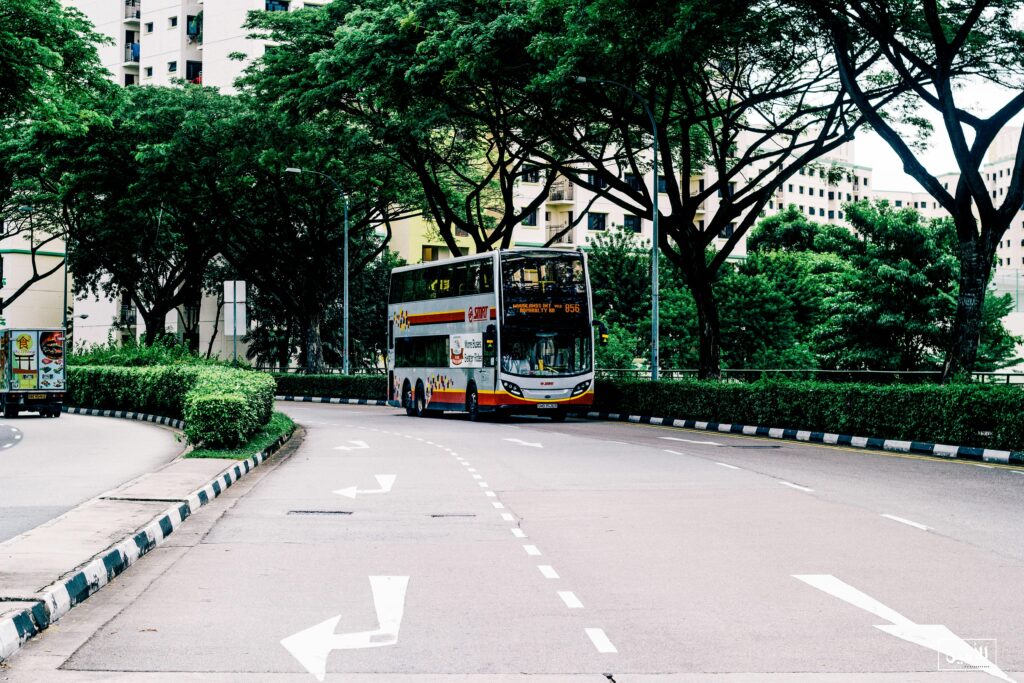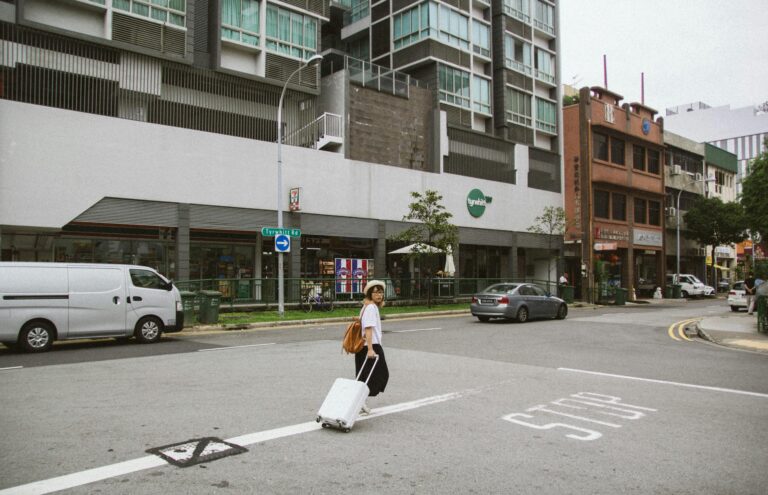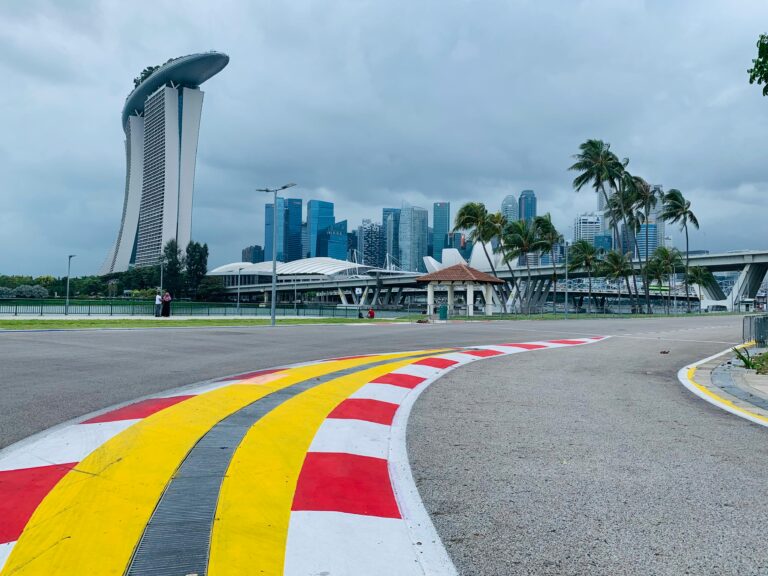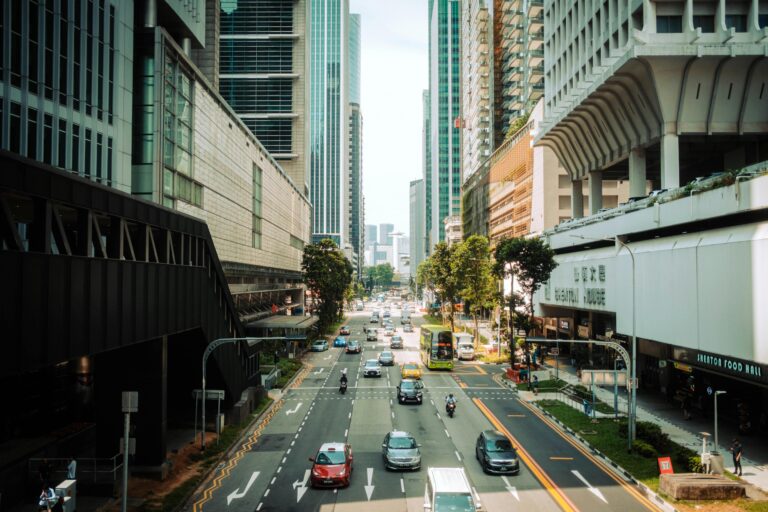
Singapore, known for its efficient and well-maintained road infrastructure, has implemented a comprehensive set of road regulations and policies designed to manage traffic, ensure safety, and promote sustainability. These regulations, enforced by various government bodies, play a crucial role in maintaining order on the roads and enhancing the overall driving experience. This article delves into some of the key road regulations and policies in Singapore.
Read more Singapore Road Tips Here: https://learntodrivesg.com/blog/
1. Singapore Certificate of Entitlement (COE)
The Certificate of Entitlement (COE) is a unique policy introduced in 1990 to control the number of vehicles on Singapore’s roads. The COE system requires prospective vehicle owners to bid for a certificate that entitles them to own and use a vehicle for ten years. The COE prices fluctuate based on demand, with different categories for various types of vehicles such as cars, motorcycles, and commercial vehicles.
Impact: The COE system effectively limits the growth of the vehicle population, helping to reduce traffic congestion and environmental impact. However, it also makes vehicle ownership expensive, prompting many residents to rely on public transport.
2. Electronic Road Pricing (ERP) in Singapore
Electronic Road Pricing (ERP) is Singapore’s answer to traffic congestion during peak hours. Implemented in 1998, this system uses gantries equipped with sensors and cameras to automatically charge vehicles passing through designated roads during specific times. The charges vary based on traffic conditions and time of day, encouraging drivers to use alternative routes or travel during off-peak hours.
Impact: The ERP system has been successful in managing traffic flow and reducing congestion in high-traffic areas. By adjusting the pricing, the Land Transport Authority (LTA) can influence driving patterns and promote a more balanced use of road infrastructure.
3. Vehicle Quota System (VQS)
Complementing the COE system, the Vehicle Quota System (VQS) sets a cap on the number of new vehicles allowed on the roads each year. The VQS ensures that the growth rate of the vehicle population is kept in line with the expansion of the road network and public transportation options.
Impact: The VQS helps maintain a sustainable vehicle population, preventing overcrowding on the roads and minimizing environmental degradation.
4. Emission Standards and Green Initiatives in Singapore
To combat air pollution and promote sustainability, Singapore has stringent emission standards for vehicles. All vehicles must meet Euro 4 emission standards, with newer vehicles required to comply with even stricter Euro 6 standards. Additionally, the government offers incentives for the adoption of electric vehicles (EVs) and hybrid vehicles, including rebates and tax reductions.
Impact: These policies contribute to cleaner air and a reduction in greenhouse gas emissions. The push towards EVs aligns with Singapore’s broader environmental goals and commitment to sustainable development.
5. Road Safety Measures
Singapore’s road safety regulations are designed to protect all road users, including drivers, pedestrians, and cyclists. Strict enforcement of traffic laws, such as speed limits, seat belt requirements, and drink-driving prohibitions, helps maintain high safety standards. The LTA and Traffic Police also run regular road safety campaigns to educate the public and promote safe driving behaviors.
Impact: These measures have resulted in a relatively low rate of traffic accidents and fatalities, making Singapore’s roads among the safest in the world.
6. Parking Policies
Efficient use of space is crucial in land-scarce Singapore. The Urban Redevelopment Authority (URA) and the Housing & Development Board (HDB) regulate parking policies, including the provision of parking lots in residential, commercial, and industrial areas. The government also promotes electronic payment systems for parking, enhancing convenience for drivers.
Impact: Well-managed parking policies reduce illegal parking and congestion, ensuring smooth traffic flow and optimal use of available space.
7. Public Transportation Integration
Singapore’s road policies are closely integrated with its public transportation strategy. By enhancing the connectivity and efficiency of buses and trains, the government aims to reduce reliance on private vehicles. Initiatives such as bus lanes, integrated transport hubs, and real-time public transport information systems support this goal.
Impact: A well-integrated public transport system alleviates road congestion, reduces carbon emissions, and provides affordable and efficient travel options for residents.
Other Road Policies in Singapore:
1. Road Tax and Vehicle Insurance
- Road Tax: All vehicles in Singapore are required to pay an annual road tax, the amount of which depends on factors such as engine capacity and vehicle type.
- Vehicle Insurance: Mandatory third-party insurance coverage is required for all vehicles to compensate for bodily injury or property damage caused by accidents.
2. Vehicle Inspection and Maintenance
- Vehicle Inspection: Mandatory periodic inspections, known as Vehicle Inspection (VI) or Vehicle Inspection and Type Approval System (VITAS), ensure that vehicles meet safety and emission standards.
- Maintenance Standards: Vehicles must adhere to maintenance standards to ensure roadworthiness and safety. Failure to maintain vehicles in a roadworthy condition can result in penalties.
3. Special Vehicle Schemes
- Vintage Vehicle Scheme: Owners of vintage vehicles can enjoy discounted road tax rates and certain exemptions, provided their vehicles meet specific criteria.
- Off-Peak Car Scheme: This scheme offers reduced road tax rates for cars registered under it, with restrictions on usage during peak hours on weekdays.
4. Heavy Vehicle Parking
- Heavy Vehicle Parking Zones: Designated parking zones are allocated for heavy vehicles to minimize congestion and ensure efficient use of road space. Heavy vehicle owners must adhere to parking regulations to avoid fines.
5. Traffic Enforcement Cameras
- Red Light Cameras: Installed at intersections, these cameras capture images of vehicles that run red lights, leading to automatic enforcement actions such as fines and demerit points.
- Speed Cameras: Speed cameras are deployed at various locations to detect vehicles exceeding the speed limit. Offenders receive fines and demerit points based on the severity of the speeding violation.
6. Pedestrian Safety Measures
- Pedestrian Crossings: Authorities strategically place zebra crossings and pedestrian signal lights to facilitate safe crossing for pedestrians.
- Pedestrian Overpasses and Underpasses: Authorities construct elevated or underground walkways at busy intersections to separate pedestrian traffic from vehicular traffic.
7. Traffic Calming Measures
- Speed Humps and Cushions: Installed on roads with high pedestrian activity or residential areas to slow down vehicle speeds and improve safety.
- Chicane and Choker Designs: Road designs that narrow lanes or create curves to force vehicles to reduce speed, particularly effective in residential neighborhoods.
8. School Zone Safety
- School Zone Speed Limits: Reduced speed limits are enforced in school zones to protect children during drop-off and pick-up times.
- School Zone Signage and Markings: Clear signage and road markings indicate school zones and remind drivers to exercise caution.
9. Emergency and Incident Management
- Emergency Response Plan: Coordinated response protocols involving agencies like the Singapore Civil Defence Force (SCDF), Traffic Police, and Land Transport Authority (LTA) ensure swift response to road accidents and incidents.
- Traffic Incident Management System (TIMS): Real-time monitoring and management of traffic incidents to restore traffic flow as quickly as possible.
10. Road User Education and Awareness
- Community Engagement Programs: Educational campaigns conducted by government agencies and non-profit organizations to promote road safety and responsible driving behavior.
- Driver Education Programs: Mandatory driver education courses for new drivers to impart knowledge of road rules and safe driving practices.
Conclusion
Singapore’s road regulations and policies are a testament to the city-state’s forward-thinking approach to urban planning and transportation management. Singapore continues to maintain an efficient, safe, and environmentally friendly road network. These measures not only enhance the quality of life but also set a benchmark for cities worldwide.






